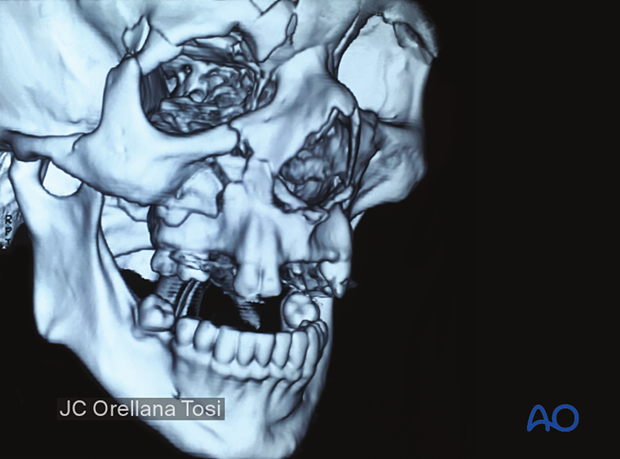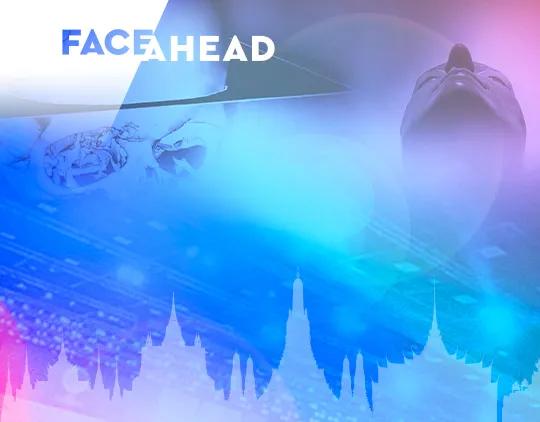Le Fort II fracture
Definition
The Le Fort II fracture is also referred to as a pyramidal fracture. It commonly extends from the pterygoid plates obliquely through the maxilla, crossing the orbital rims, through the nasal skeleton and naso-orbital ethmoid area. Low fractures centrally involve the nasal skeleton, and higher fractures separate the entire nasofrontal area. CSF leak and brain injury from the contusion frequently accompany this type of injury.
Patients with Le Fort II injuries are often admitted to the hospital in an unconscious state and are often intubated. Special attention must be paid to foreign bodies such as teeth or tooth fragments obstructing the airways.
Severe bleeding and CSF leakage may accompany Le Fort II and III fractures and affect the treatment and outcome.
It should be recognized that Le Fort II fractures involve the orbit. Basic assessment of visual acuity is mandatory in the conscious patient. In the unconscious patient, the swinging-flashlight test can give evidence of or exclude afferent pupillary defects (Marcus Gunn pupil).
It should be emphasized that, as is the case with all Le Fort fractures, separation of the maxilla from the pterygoid plates may occur, or the fracture may involve both the maxilla and the pterygoid plates if comminuted.
When assessing Le Fort fractures, it is crucial to ascertain the patient’s premorbid occlusion.
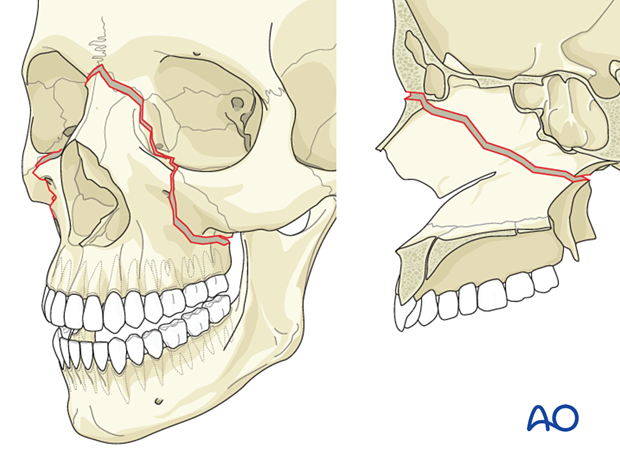
CSF leak
The following diagnostic procedures can be performed if there is a suspected CSF leak (clinical sign: straw-colored nasal drainage):
- Application of fluorescent dyes
- Comparison of the concentration of glucose between fluid and patient’s serum
- Laboratory analysis for beta-2 transferrin
- Specialized neuroradiological imaging with intrathecal contrast medium
Radiographic findings
CT slices of a Le Fort II fracture.
Note the fracture of the nasal pyramid.
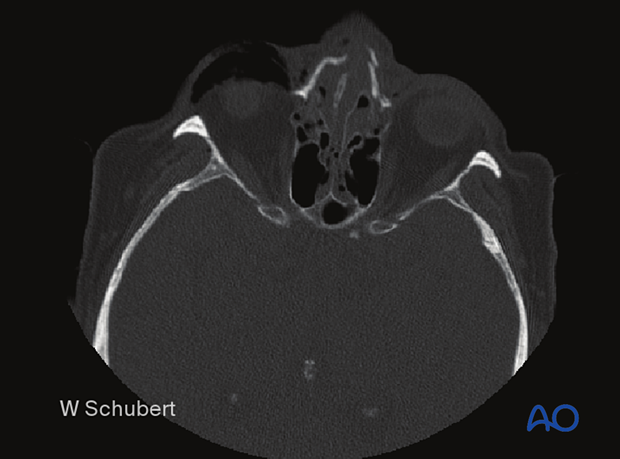
Note the fracture patterns on the maxillary bone.
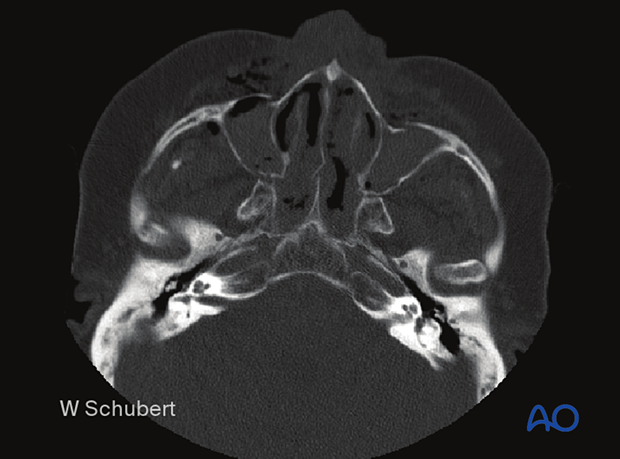
Note the fracture of the pterygoid plates.

Note the disjunction between the nasomaxillary complex and the frontal bone.
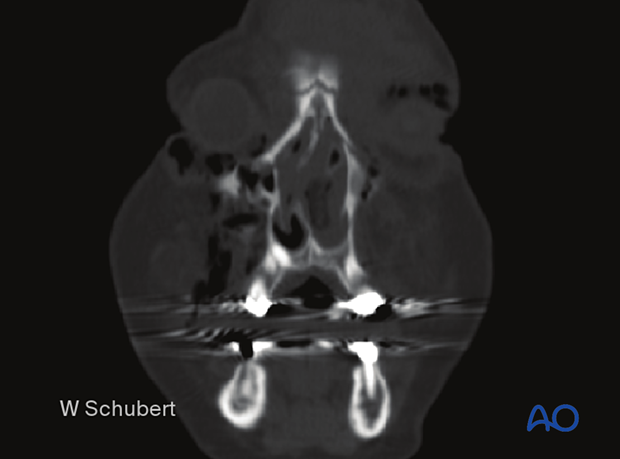
Note the deviation of the septum and the fracture pattern.
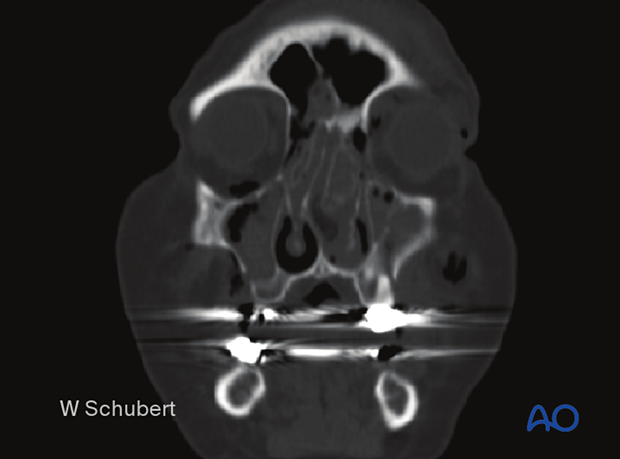
Note the fracture of the pterygoid plates on a coronal view.
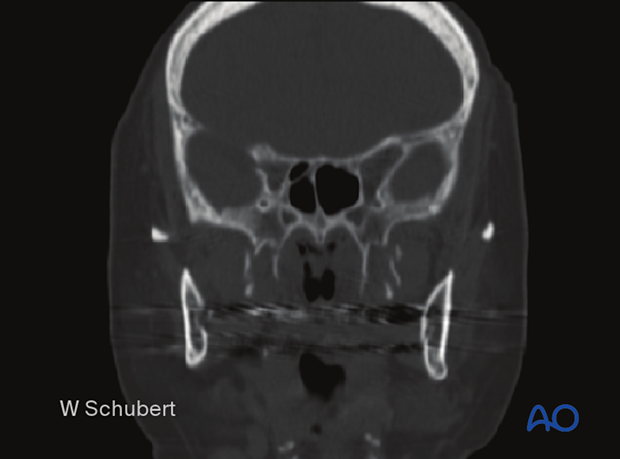
3D CT scan
In this 3D CT scan, we can see a LeFort II fracture with comminution, in addition to a high-level LeFort I and an NOE fracture, but there is no separation or displacement of the medial canthal ligament.
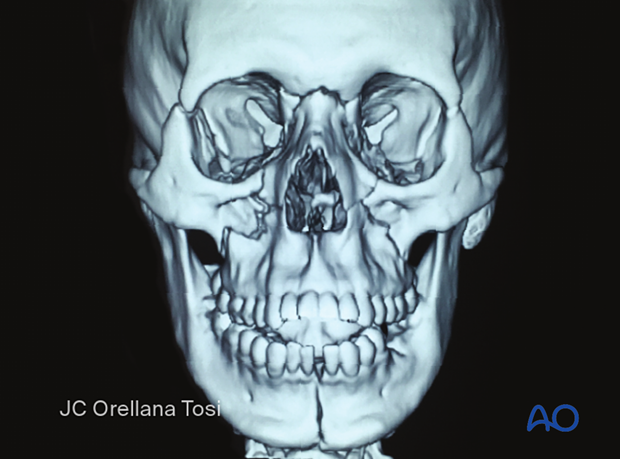
Note the separation between the frontal bone and the radix of the nose with both nasal bones being a separate upper facial fragment from the medial orbital rim. This pattern represents an incomplete but rotated type of composite NOE single fragment fracture.
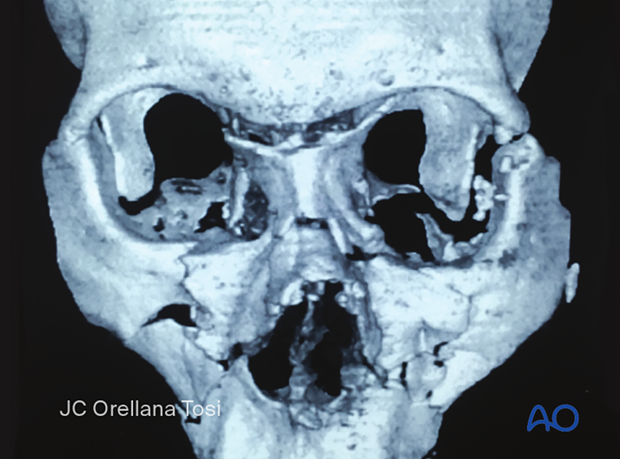
In this lateral view we can appreciate the displacement of the LeFort II fracture with comminution.
